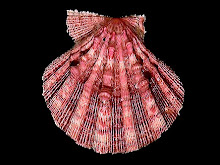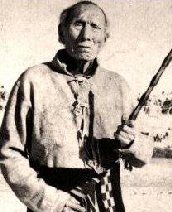Tolkien's Beowulf: Observations on An Enlightening Criticism and It's Contemporary Critiques
It has held many names throughout the centuries. Thorkelin called it De Danorum Rebus Gesfis. Wanley Poesis called it Poeseos Anglo'Saxonicae egregium exemplum. J. R. R. Tolkien reminded us of a title lost to modernity, Beowulfiana. Tolkien and many that followed would also call it The Beowulf. Over time, criticisms of this poem would differ as greatly as the name; however, one man would approximate these critics and there critiques by changing the focal point of the criticism itself.
Longstanding notions, though varied in content, comprehended closely in summarization and focus on Beowulfiana before the overall conviction was shifted. “The fault of Beowulf is that there is nothing much in the story ... in construction it is curiously weak, in a sense preposterous ... ”1 (W. P. Ker; Tolkien, 1936) “In 1925 Professor Archibald Strong translated Beowulf into verse:2 but in 1921 he had declared: “Beowulf is the picture of a whole civilization, of the Germania which Tacitus describes. The main interest which the poem has for us is thus not a purely literary interest. Beowulf is an important historical document.”3 (Archibald Strong, 1925; Tolkien, 1936) Poesy is marginalized in the majority of Beowulfiana critiques, and diachronic value is overly-emphasized. At Oxford University, a professor of Anglo-Saxon named J. R. R. Tolkien reviewed a great majority of the Beowulfiana criticism of his day. Little did this professor understand how influential his marginalized lecture based on his research would become during the years that followed.
Holding a lecture on November 25th, 1936 entitled Beowulf: The Monsters and the Critics, Tolkien addresses not only this relatively uniform notion of value in Beowulfiana, but adds a revived focus to the mixture, in itself not an actual critique but a shifting of attention. In this lecture he underlines his argument by denying the grounds referring to the poem and undermining the sparse literature he has reviewed concerning the poem, however, still maintaining the diachronic importance of the poem: “It is poor criticism, criticism that is directed to the understanding of a poem as a poem ... there is an historical explanation of the state of Beowulfiana that I have referred to ...[and] that explanation is important, if one would venture to criticize the critics ... why should we approach this, or indeed any other poem, mainly as an historical document[?]... Beowulf is ... so interesting as poetry, in places poetry so powerful, that this quite overshadows the historical content, and is largely independent of ... important facts.” (Tolkien, 1936 Beowulf: The Monsters and the Critics) His statement is so simple that the weight of it can be overlooked: do not focus upon Beowulfiana as merely historical in nature and nothing more. Do not forget that Beowulfiana is also a poem in itself, and thus deserves attention as such, but does not outweigh its diachronic value. As an example of the scholarly shift in focus on Beowulfiana, Burton Raffel writes: “... Beowulf's position as a great poem must remain primary; the other purposes it serves are important but peripheral to this central fact of sheer literary merit”4 By shifting the overall scholarly focus upon the merits of “the poem as a poem”, Tolkien gave greater weight to the poem's credibility in it's entirety, rather than the separate parts of the whole. Not many put this fact so bluntly as Ian Hissop and E. Christian Kopff, both contemporaries of more modern times, long proceeding Tolkien's lecture. Hissop writes: “[Tolkien's] criticism then and now seems like a breath of fresh air, removing the dusty pedantry that covers this Anglo-Saxon poem. He pours witty scorn on the literary archaeologists, men who dig ... anything but read the poem as a whole. How the modern critics must hate this essay.” Kopff writes: “It is scarcely too much to say that this one essay changed forever the study of a major work in the canon of English literature, that it established Beowulf as a major literary work ... in 1936 Tolkien found that “Beowulf has been used as a quarry of fact[s] ... more assiduously than it has been studied as a work of art.”5 Both of these contemporaries see the considerable weight of not only Tolkien's lecture, but of Beowulfiana as a whole, whether as a poem or a singular aesthetic piece. But many will revert or counter Tolkien's shift in focus and new ideals concerning the poem.
As criticism is frequently based on past criticism, often not giving a fresh perspective but a review of past speculation, often old viewpoints are dredged from the dusty past that skew Tolkien's argument for the poem. Daiches echoes past critical views of the poem by stating thus: “...[Beowulf is] structurally weak and providing insufficient unity of tone or organization to hold together effectively the two ... episodes ... the ultimate origin of the story is folklore ... working, as folklore does, on history.”6 (Daiches, 1970) Tolkien states the following, which undermines the arguments of even his future critics: “Nearly all the censure, and most of the praise, that has been bestowed on The Beowulf has been due ... to ... belief that [Beowulf] was something that it was not ... primitive, pagan, Teutonic, an allegory (political or mythical), or most often, an epic; or to disappoint at the discovery that it was itself and not something the scholar would have liked better ... a heathen heroic lay, a history of Sweden, a manual of Germanic antiquities, or a Nordic Summa Theologica.” (Tolkien, 1936) Nearly all contemporary critics stress one or more of the items Tolkien did not find in the poem, and this fact is grounded in the forward to the poem in the modern college literature anthology The Norton Anthology: “...the most vivid account left to us of the social world and life experiences of the Germanic and Scandinavian peoples; ...[the author of Beowulf] is both careful to preserve ... distinction between his Christian present and his pagan past.” But in the first few lines of this foreword to the poem, preceding the above can be found: “[Beowulf] is ... a heroic poem of dark magnificence...”7
From another perspective, one could not imagine why both views would not hold equal esteem and why there would be an argument at all as to whether Beowulfiana's diachronic or poesy outweighed one or the other in worth. Critics before Tolkien's time, those he argued against, would state that the diachronic was more valuable due to flaws in the focus, structure and content of the poem. Although Tolkien succeeded in bringing the literary value and poesy of the poem to the forefront, he did mention it overshadowing the diachronic in an independent way. Tolkien's “criticism of the critics” as he so mildly puts it, has played such a heavy role in how a modern critic views Beowulfiana, not in diachronic value but mainly poesy, that the role of diachronic is shadowed just as Tolkien stated, poesy above diachronic value, rather than stabilizing or unifying the importance of both. This was probably not Tolkien's intention when he originally lectured on the poem as he stressed the independent value of both its parts and its whole. It will be healthy to see a digression from both the weightiness lent to either side and a more uniform approach to the merits of both poesy and diachronic in not only Beowulfiana but in literate ventures in general.
Tolkien, J. R. R. Beowulf: The Monsters and the Critics, Oxford University, 1936; originally found by Tolkien in English Literature, Medieval pp. 29-34;
Tolkien, J. R. R. Beowulf: The Monsters and the Critics, Oxford University, 1936; originally found by Tolkien in Beowulf: An Introduction, chapter 8. Questions of Literary History, Date, and Authorship; Beowulf in the Light of History, Archaeology, Heroic Legend, Mythology, and Folklore-in his notes, Tolkien points out that there is no Poetry section.
Tolkien, J. R. R. Beowulf: The Monsters and the Critics, Oxford University, 1936; originally found by Tolkien in Constable, Beowulf translated into modern English rhyming verse, 1925
Ramey, Bill,The Unity of Beowulf: Tolkien and the Critics, 2004 The Unity of Beowulf ; originally found by Ramey in: Raffel, Burton, trans.
Introduction, Beowulf. New American Library. New York 1963Contemporary Literary Criticism, Thompson Gale, 1997
-
Daiches, David Critical History of English Literature, vol. 1, pp. 9, Ronald Press Company, New York, 1970
Maynard, Mack, et al. The Norton Anthology of World Masterpieces: The Western Tradition, seventh ed, vol. 1, W. W Norton & Company, New York 1984






0 Comments:
Post a Comment
<< Home